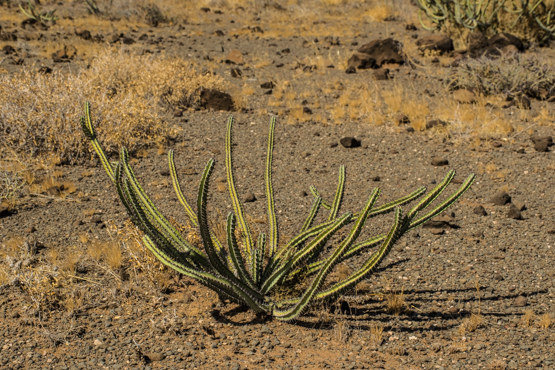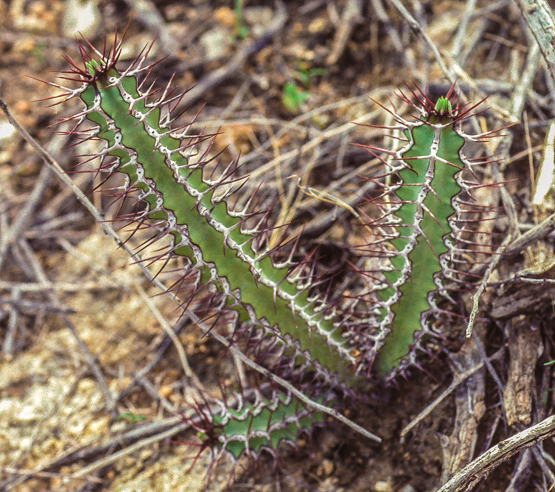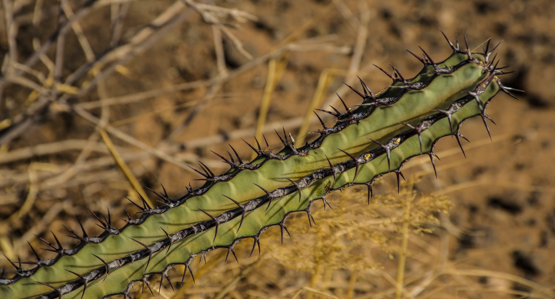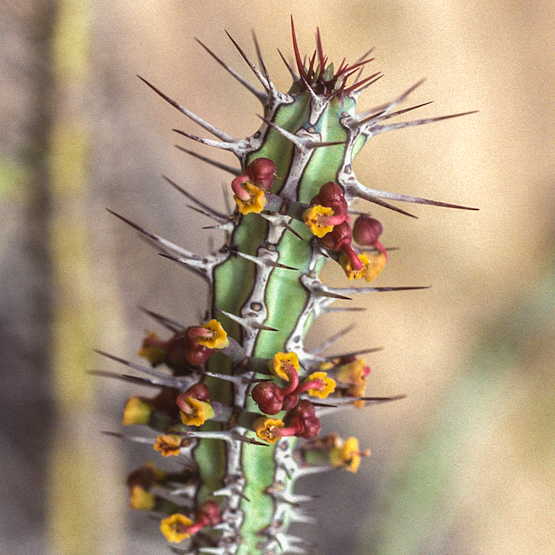All pictures taken near Matjiesfontein.
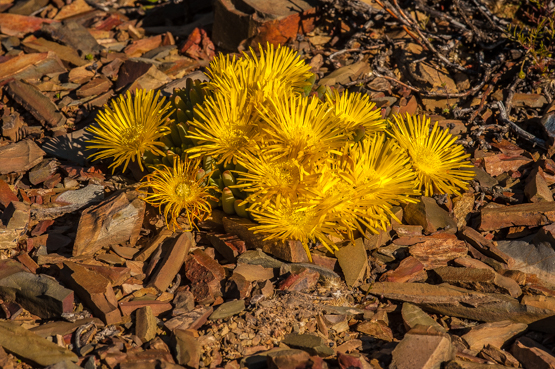
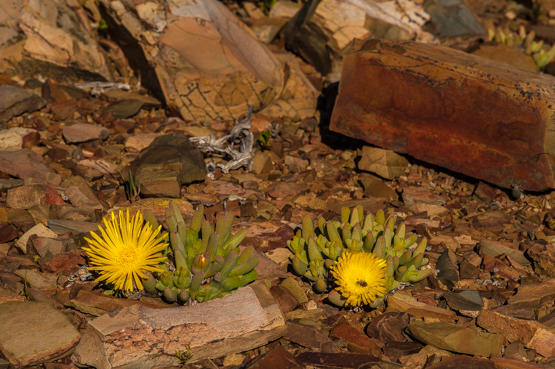
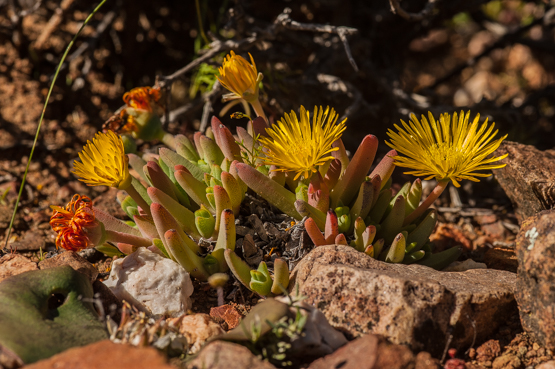
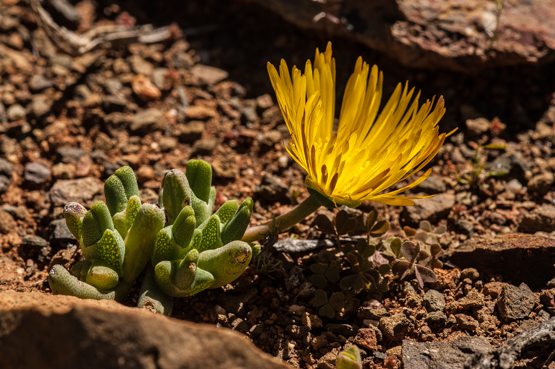
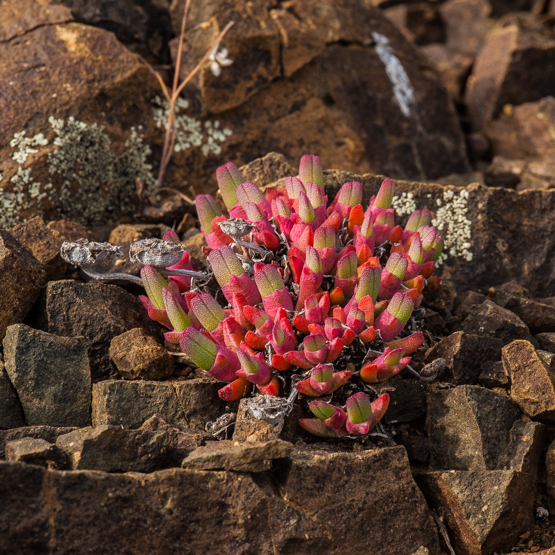
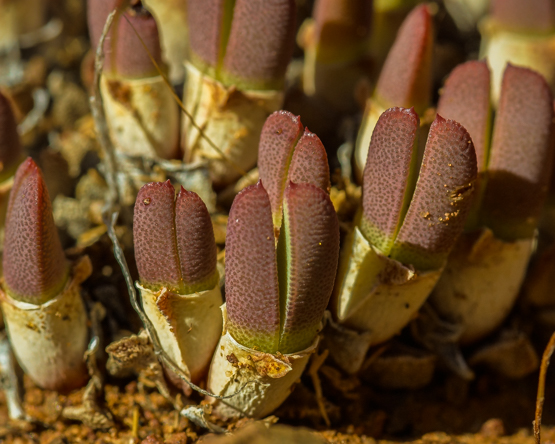
All pictures taken near Matjiesfontein.






One of the many older names for this plant is Mesembryanthemum cigarettiferum.
Gustav Schwantes in his magnum opus “Flowering stones and Midday-Flowers” (1957) gives a wonderful description of the species, referring to that name as follows:
“…It was a small, tufted, branched plant, on which were a number of cylindrical structures with dry skins like paper bags; from each of them projected the tip of a pair of leaves at rest within. These paper bags were formed by the drying up of earlier leaf pairs which had been joined for a long way up. The young pair of leaves inside them was. however, much more deeply divided. The surrounding bags reminded Berger so strongly of the paper mouthpiece of a cigarette that he gave it the very descriptive name of Mesembryanthemum cigarettiferum, the Mesembryanthemum bearing cigarettes. The leaves at rest within the bags, when the plants had been potted up and started into growth, grew out of the bags and developed into thick, narrow leaves such as are often found in the Mesembryanthemaceae and produced from the centre an equally narrow pair of leaves, which, however, were joined for a considerable distance so that only the extreme ends of the leaves appeared as free tips. Within this pair of leaves, which looks like a cylinder with little horns at the top, the young, but deeply divided, pair develops; it draws on the pair surrounding it so that this finally becomes the protecting skin, the paper bags referred to above. Clearly this is a case of one of the many interesting contrivances for protecting the young growth from the rigors of the dry period. This protection is achieved here in the same way as in Ruschia pygmaea (see picture #2, FN) and many other species of Mesembryanthemaceae.”
The plants form compact clumps with many branches, up to 20 cm in diameter, with
light blue-grey to green-grey leaves.
The flowers appear from July to October and are about 4.5 cm in diameter; they open in the early afternoon.
Widespread on shale slopes and flats at an altitude of 300-950m from Namaqualand to the western Little Karoo and the only Cheiridopsis that occurs this far south.
Pictures taken near Matjiesfontein on the following dates:
#1 31 Jan. 2009
#2 18 Feb. 2007
#3 and #4 17 May 2008


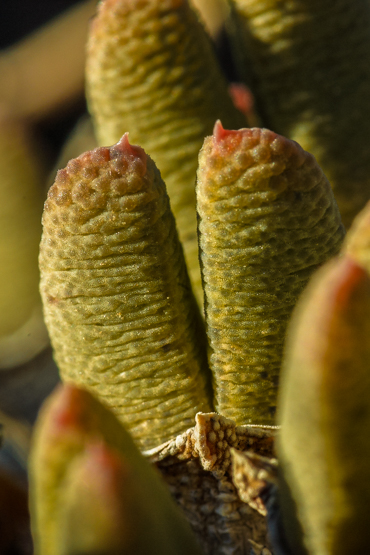
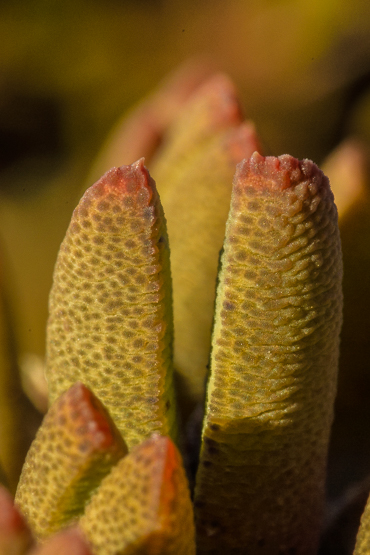
Subspecies namaquensis differs from its sibling by having no more than two leaves, one of which is usually inconspicuous.
The inflorescence is shorter (5-10 cm tall) and always single and the filaments have a double tuft of hairs.
These plants occur only in the Northern Cape, from Springbok to the Richtersveld in gravelly places.
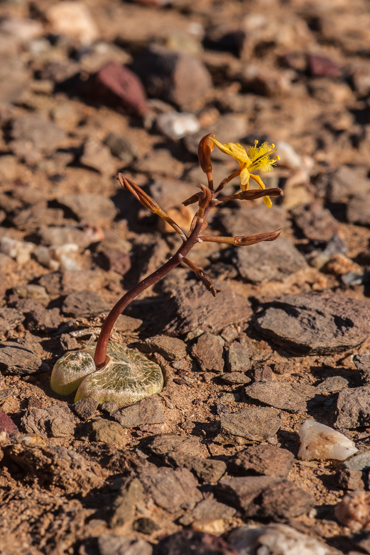
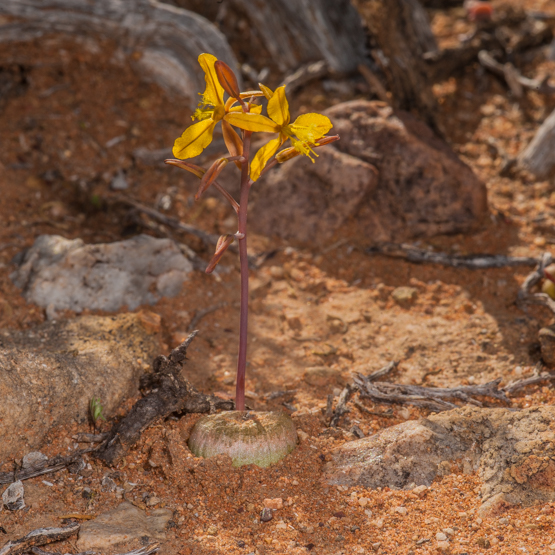
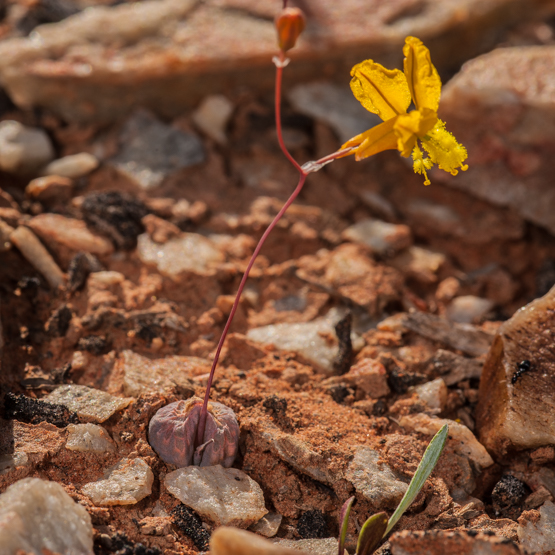
One often comes across the name of the species as Bulbine mesembryanthemoides, but because Haworth used the spelling mesembryanthoides in his original description, this has to be accepted as correct.
Subspecies mesembryanthoides has a small underground tuber and usually 1-2
leaves (rarely up to 4). The leaves are cylindrical, 1-2.5 cm tall and up to 2 cm in diameter. As soon as the dry summer period arrives, they start to whither.
Flowers appear in spring and summer (Augustus-November), usually after the leaves have retracted. Each plant may have 1-3 inflorescences up to 20 cm tall.
This subspecies occurs widespread from the Knersvlakte in southern Namaqualand to Graaff-Reinet in the Eastern Cape on rocky slopes and flats.
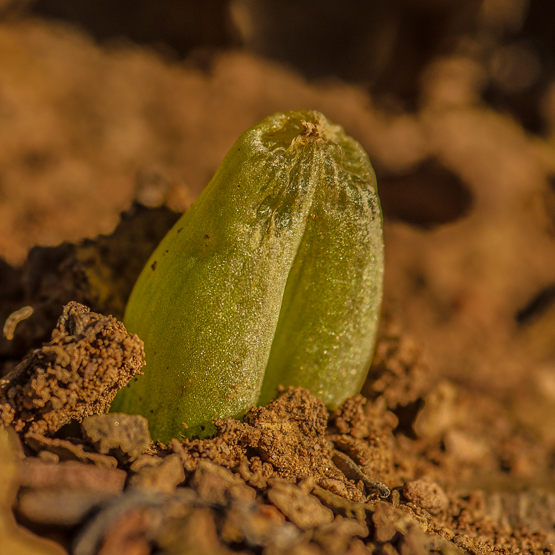
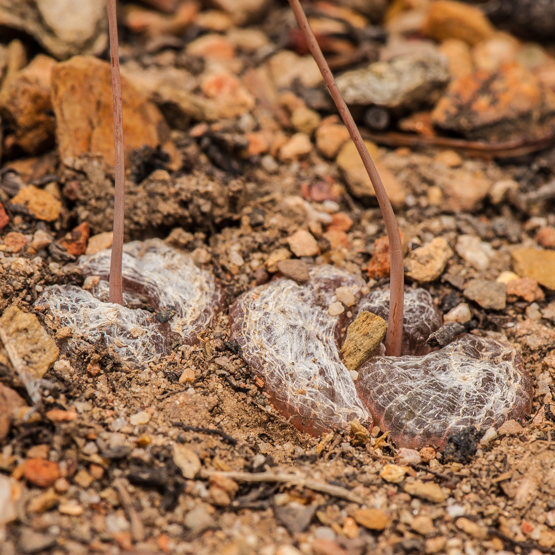
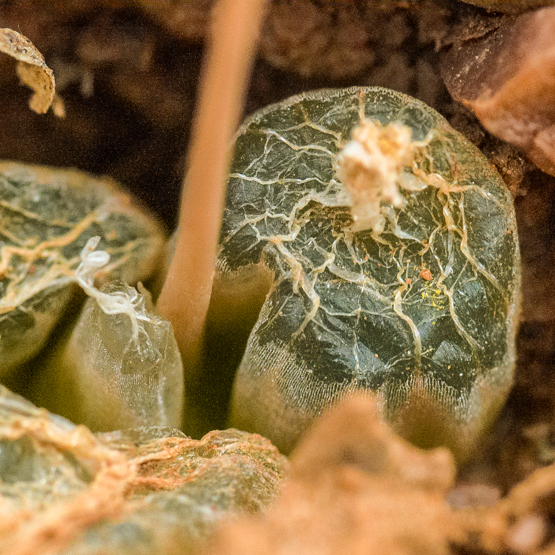
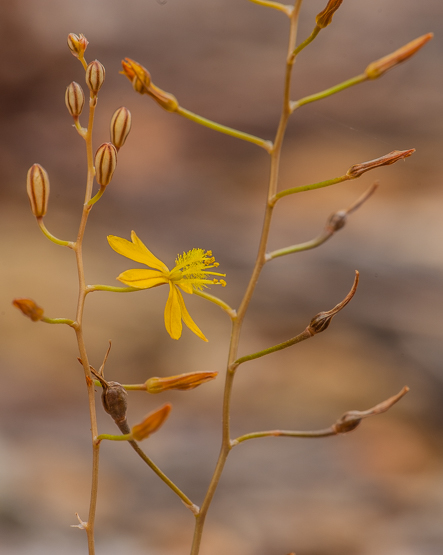
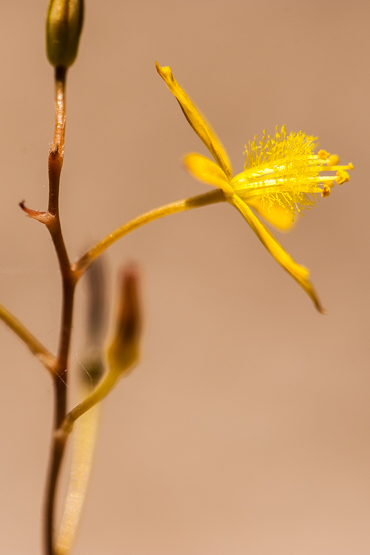
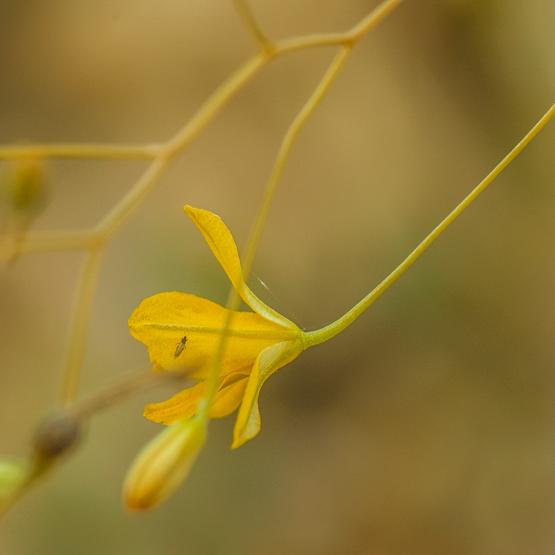
If there were a list of favourite types of succulents, I’m sure the so-called window plants would rank very high. Most of these plants belong to the Aizoaceae (Mesembs), but they are also found in Bulbine and Haworthia.
When one looks up information on window leaves, one gets the impression they are all built on the same principle: the surface of the leaf tip lacks chlorophyll, the central parenchyma* reaches up to the epidermis and as a result of this combination, the leaf tip looks and acts like a window.
In a few cases however, the windows are formed differently.
It has taken me quite a while to find a place where this is described in a comprehensive as well as comprehensible way.
In Cactus & Succulent Journal (US) vol. 16, 1974, Werner Rauh published an article called Window-leaved succulents. He starts his explanation with a description of Haworthia obtusa (=cooperi) var. pilifera and uses more or less the following wording:
“The numerous fleshy leaves are nearly hidden in the substratum and we can only see the transparent, glass-like leaf tips, ending in a long hair. The transparence of the leaf tips is caused by a lack of chloroplasts**. We find the assimilation parenchyma only in the lower two thirds of the blades, but these leaf parts are not accessible to the light. The consequence of this anatomical structure is that light, necessary for assimilation, can reach the assimilation parenchyma only by passing the transparent windows. But the leaves of H. pilifera are not in the morphological sense true window leaves.”
He then moves on to Haworthia obtusa (=cooperi) var. dielsiana, saying:
” … the most remarkable feature is the behaviour of the leaves in the course of their development: young leaves are of the same shape as those of H. pilifera, but becoming older, the upper third of the lamina, which exceeds the soil surface, dies off, so that only the water parenchyma, covered by the shrunken epidermis is to be seen. The lower parts of the leaves with the assimilation parenchyma are hidden in the ground; sunlight can reach it only by passing through the water parenchyma.”
This is the same type of window formation we find in Bulbine mesembryanthoides. In Rauh’s words:
“Becoming older, the upper parts of the leaves die off, as in Haw. obtusa var. dielsiana and the result is the formation of a big window with a plane surface. The assimilating parenchyma is completely hidden in the substratum.”
We know that strong sunlight destroys the chlorophyll, which is essential for the plant’s metabolism.
Window-leaved plants are hidden in the ground (at least in the hot and dry season) and sunlight can reach the assimilation tissue only through the windows, passing through the water parenchyma. This filtering process protects the plants against very strong light.
In experiments carried out with Fenestraria, it was found that the light is reduced so much that the chloroplasts will not be damaged, but stays strong enough to allow sufficient assimilation and production of organic substance.
* parenchyma is the relatively undifferentiated tissue that makes up the bulk of many plant organs and is often used for storing of water or food.
** chloroplasts are the tiny parts within plant cells that contains chlorophyll.
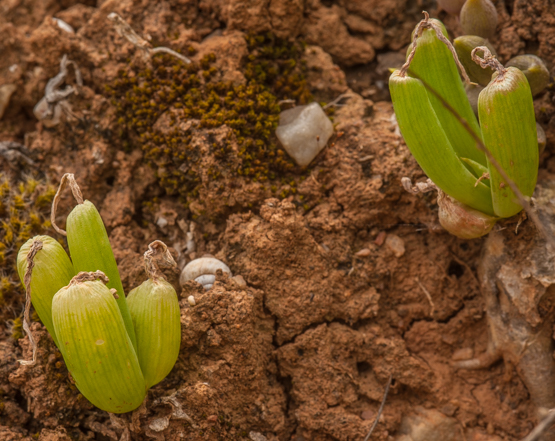
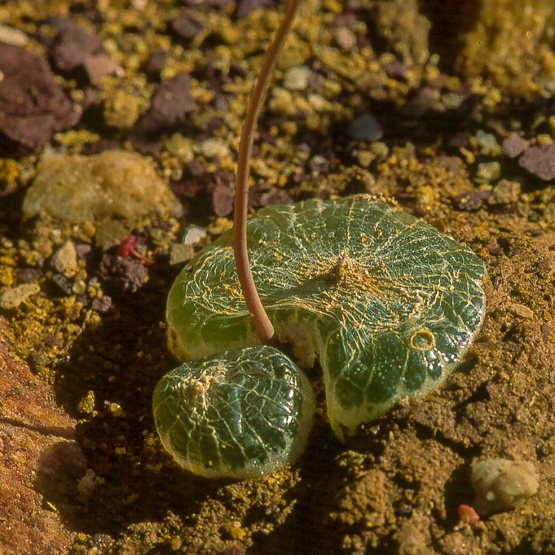
With their broad, boat-shaped, yellowish-green leaves, these plants rather look like Glottiphyllums, but the cover of short soft hairs will soon tell you differently. The leaf pairs are very unequal, with the longer leaf up to about 5 cm long.
The flowers are 2-2.5 cm in diameter, usually pink-purple with a darker purple mid-stripe, and appear in late spring (mainly October-November).
In the western Little Karoo (from Barrydale to Muiskraal), the plants are often abundant on shallow clay soils in the shade of bushes.
The species is similar to G. schwantesii which is more robust, does not have its stem embedded in the ground and is much rarer (known from only one locality).
The first three pictures were taken in summer (two days ago), the last one in autumn (13 March 2007).
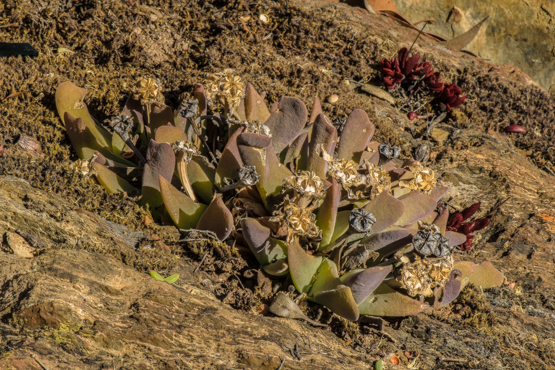
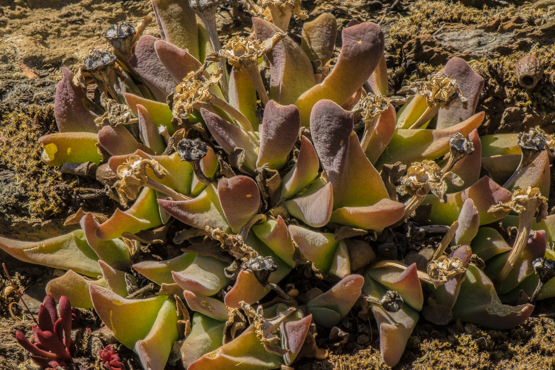
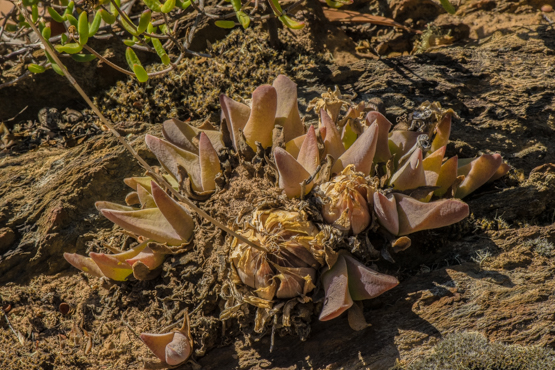
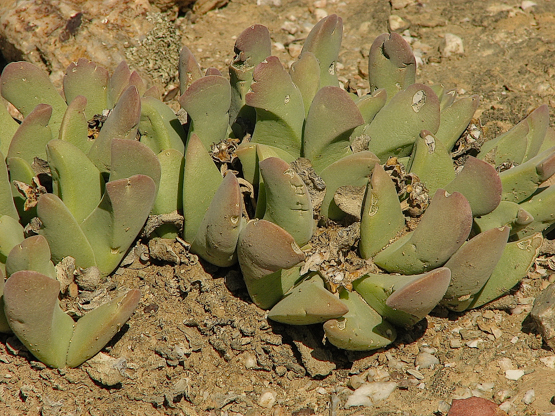
About 70 species of Pelargonium belong to the section Hoarea: deciduous geophytes with turnip-shaped or elongated tubers. Several of these plants have similar leaves, so one needs flowers to positively identify them.
P. luteolum possesses a large tuberous rootstock and a number of smaller tubers and
leaves 4-7 cm long and 3-12 cm wide which are dry at flowering.
The inflorescence has 2-3 branches and is up to 20-30 cm tall.
Each of the branches bears to 16 flowers, which are about 1.5 cm in diameter and pale yellow, sometimes pink, with dark red-purple lines on the two upper petals. They usually appear from November-March, but sometimes as late as May.
The plants are widespread in various -usually rocky- habitats from southern Namaqualand to Steytlerville and Mossel Bay. This is mainly a winter rainfall area, with about 100-300 mm rain per year. They seem to be especially plentiful in the Worcester-Montagu area.
The three overlapping lower petals -hiding the style and stamens-are characteristic for this species. The literature tells us that they are arranged in such a way that the lateral ones partly overlap the central one. When you look closely at the last picture, you will see that the arrangement is sometimes the other way round: here the central one of the three lower petals lies on top of the two lateral ones.
The first picture was taken 27 June 2010, the next three 22 Jan. 2016 and the last one 21 Febr. 2009.
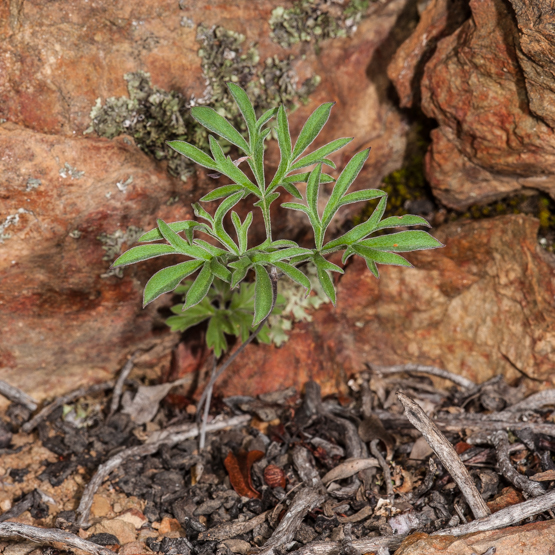
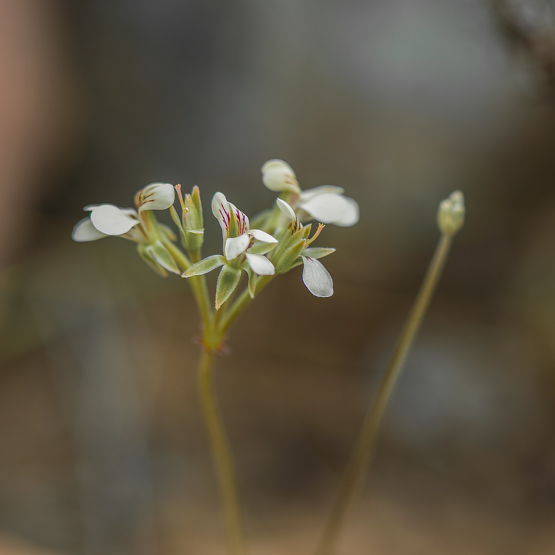

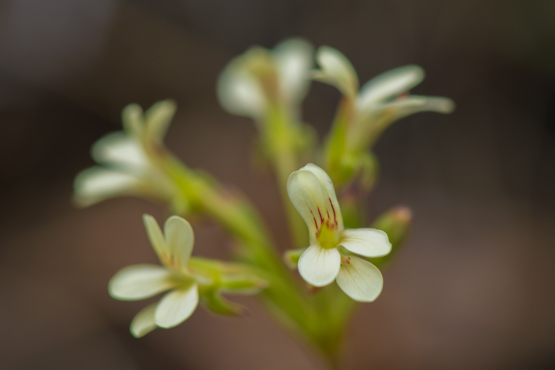
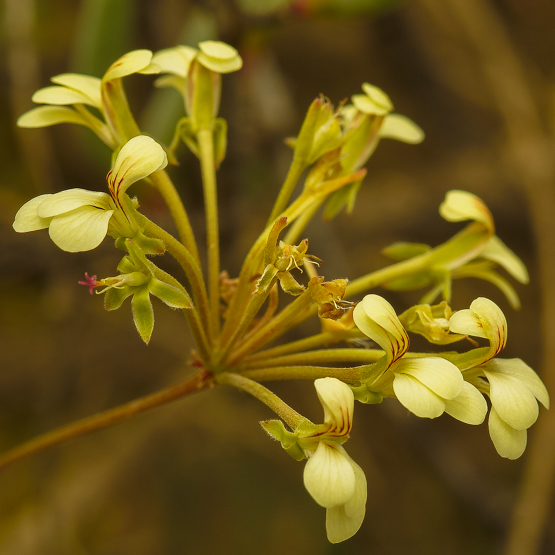
Similar to, but taller and more impressive than, E. tescorum, this species occurs in the hilly region south of Lake Turkana in Kenya on rocky slopes with open bushland between 900 and 1800 m.
The plants grow into sturdy shrubs up to 2.5 m tall, with many 2-3 cm wide branches. These have 4-5, sometimes 6, angles; uniformly green or sometimes with somewhat darker blotches around the spine-shields; slightly constricted every 10-20 cm. The strong spines are to 1 cm long.
The name (with dark flowers) refers to the crimson cyathia; the fruits are almost black.
The pictures were taken about halfway between Baragoi and South Horr on 23 Sept 2015. Altitude about 1440m.
The first picture shows a healthy stand of Euph. magnicapsula ssp. lacertosa in the background.

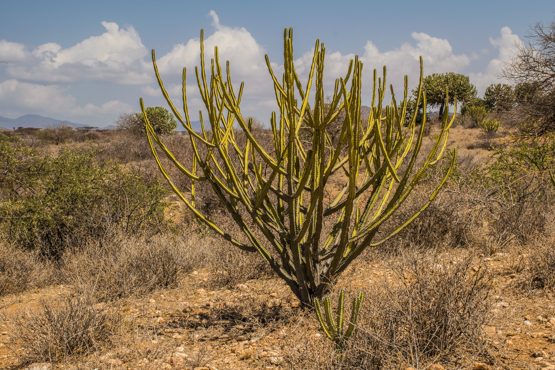
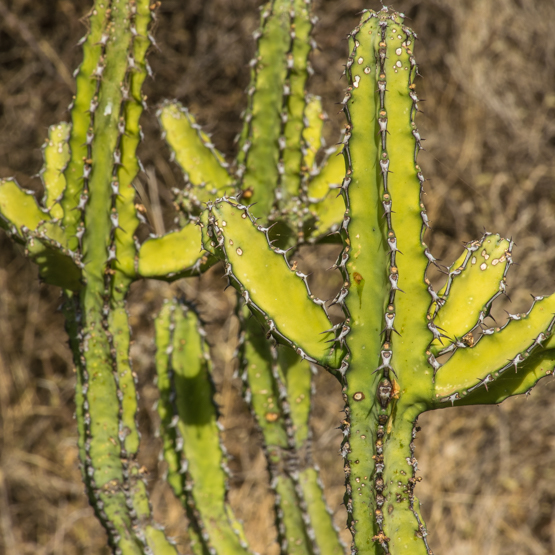
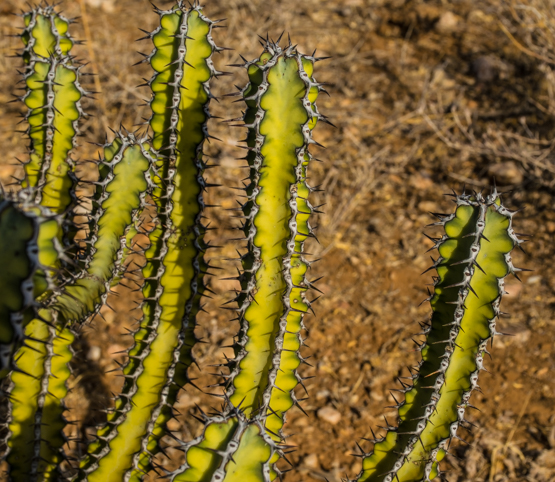
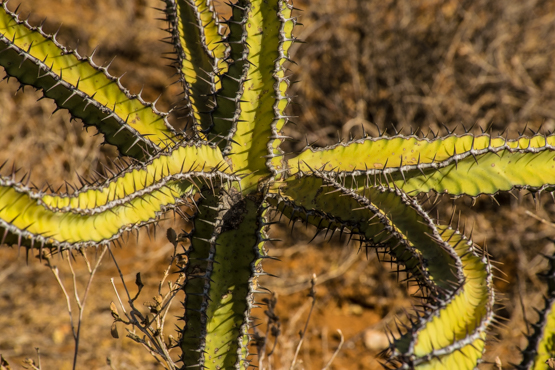
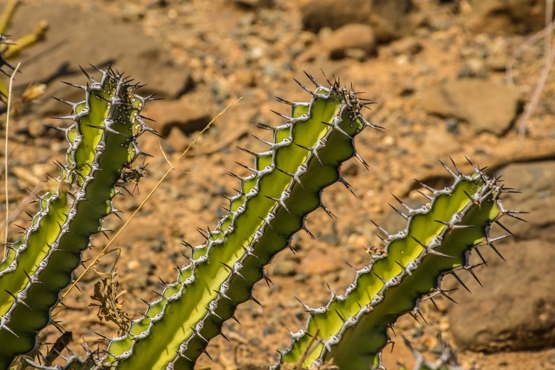
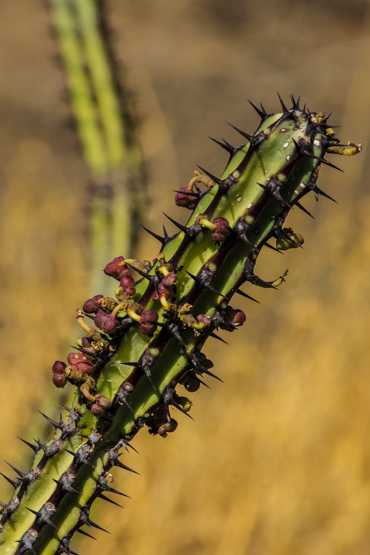
A very common sight in Kenya in dry bush land at altitudes between 600 and 1500m.
The species is often confused with S. ehrenbergii but this occurs mainly in Arabia.
In the younger stages, both species have their leaves growing in all directions. At the mature stage, they show distichous growth; in other words, the leaves then grow in two ranks, like a fan. They have a bluish cast in S. ehrenbergii, whereas in S. robusta they are darkish green (almost yellow in the wild when growing in full sun). In S. robusta the back of the leaves shows 14-30 longitudinal darker green lines. In S. ehrenbergii this is not he case; only in very mature leaves there are some faint markings.
Mature plants of S. robusta have erect stems to 60 cm tall, each with 6-14 leaves to over 2 m long.
The inflorescence is 0.8-1.4 m tall, with white or greenish flowers.
The pictures were taken between Baragoi and South Horr, 23 Sept. 2015.
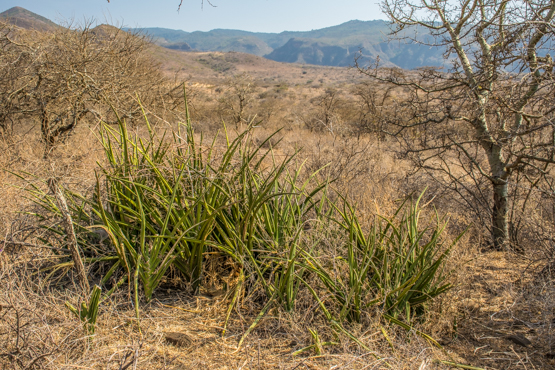
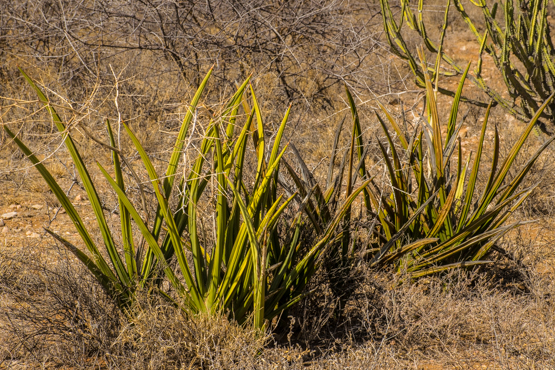
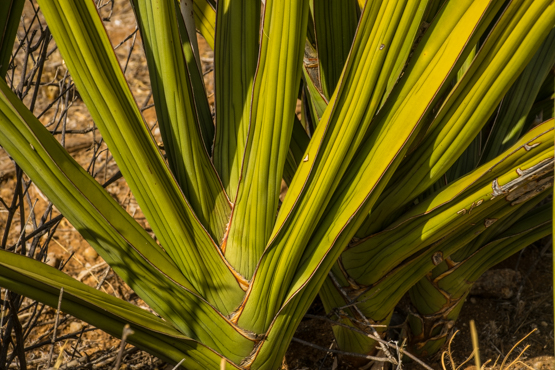
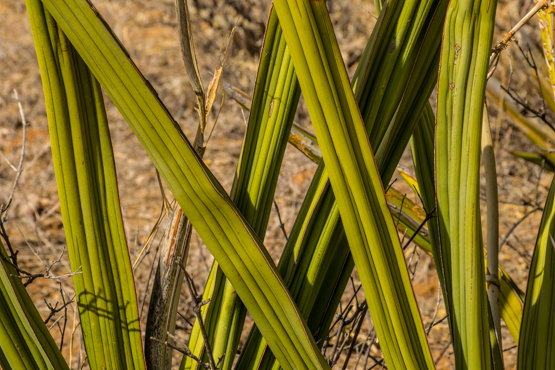
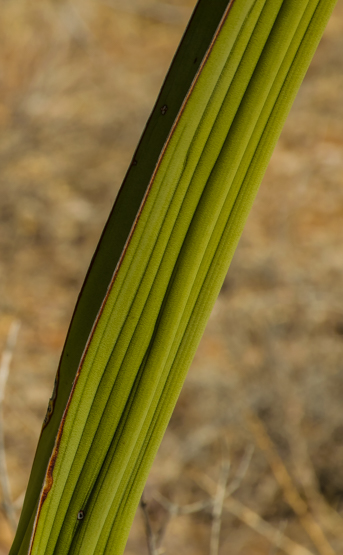
East Africa harbours several shrubby, spiny Euphorbia species which are often difficult to tell apart.
The species shown here occurs in northern Kenya and adjacent areas in Uganda and Ethiopia in very open bushland (often on lava) at altitudes between 400 and 1500 m.
The plants are mainly branched from the base and are up to 1.5 m(sometimes 2 m) tall. They have branches with 4-8 (usually 5-6) angles, up to 4 cm thick but somewhat constricted every 10-30 cm, usually with darker markings around the teeth.
Pictures 1 and 3 were taken last September south of Mt. Kulal on the eastern side of Lake Turkana in Kenya. The other two are scans from slides made in 1990 west of the lake.
